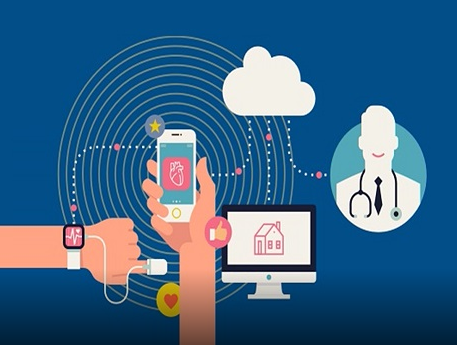1. Introduction: The Rise of Remote Monitoring
In the modern era of digital transformation, Remote Monitoring has become one of the most impactful innovations across industries. From energy management to healthcare, logistics, agriculture, and manufacturing, organizations are leveraging connected devices to collect data, monitor performance, and make smarter, faster decisions — all without being physically present on-site.
At the heart of this transformation lies IoT connectivity, and specifically, the IoT SIM Card, which ensures that remote devices stay connected, synchronized, and functional anywhere in the world. Reliable connectivity enables real-time insights, predictive maintenance, and automated control — making operations more efficient, cost-effective, and secure.
In this article, we explore how IoT SIM Cards enable seamless Remote Monitoring, the key benefits, industrial applications, challenges, and future trends shaping this rapidly growing field.
2. What Is Remote Monitoring and Why It Matters
Remote Monitoring refers to the ability to track, manage, and control devices, systems, or assets from a distance using IoT technologies. Through a combination of sensors, wireless networks, and cloud platforms, it allows companies to collect and analyze data in real time.
For example:
- A smart energy company monitors electricity usage across thousands of smart meters remotely.
- A manufacturer tracks the performance of its machines to prevent unexpected downtime.
- A logistics provider monitors vehicle conditions and routes to optimize delivery efficiency.
How It Works
Remote monitoring systems typically consist of:
- Sensors and IoT Devices – capture data like temperature, vibration, pressure, or location.
- IoT SIM Cards – enable the devices to transmit data via cellular networks (2G, 4G, 5G, LTE-M, NB-IoT).
- Cloud Platforms – aggregate and visualize data for real-time decision-making.
- Control Interfaces – allow users to send remote commands, adjust settings, or trigger alerts.
This combination ensures real-time visibility and remote control, which are essential for reducing downtime, increasing productivity, and improving operational efficiency.
3. The Role of IoT SIM Cards in Remote Monitoring
The IoT SIM Card is the critical link between the device and the cloud. Unlike traditional consumer SIMs, IoT SIM Cards are designed for machine-to-machine (M2M) communication — optimized for long-term stability, global roaming, and large-scale device management.
Key Capabilities:
- Global Connectivity: IoT SIMs connect to multiple carriers, ensuring devices stay online even when coverage changes.
- Network Resilience: They automatically switch to the strongest available network for maximum uptime.
- Remote Device Management: Administrators can manage SIM status, monitor data usage, and diagnose issues via an IoT management platform.
- Security: Private APN and VPN options ensure secure data transmission between devices and cloud servers.
In essence, IoT SIM Cards make remote monitoring reliable, continuous, and scalable — critical for industries that depend on 24/7 operations.
4. How Connectivity Enables Real-Time Control
Real-time control is the backbone of effective Remote Monitoring. Without fast, reliable communication between devices and cloud systems, it would be impossible to make timely decisions or respond to critical events.
IoT SIM Cards enable low-latency communication through advanced networks such as 4G LTE, LTE-M, NB-IoT, and 5G. This allows devices to send and receive data in milliseconds — enabling instant alerts, automated responses, and real-time decision-making.
Example Scenarios:
- Smart Energy Grids: When power consumption spikes, control systems adjust output automatically.
- Industrial Equipment: Machines send alerts before failure, allowing engineers to act remotely.
- Smart Cities: Traffic lights or street lamps adjust automatically based on real-time data.
The combination of Remote Monitoring + Real-Time Control ensures that systems can self-optimize, reducing the need for manual intervention and preventing costly downtime.
5. Key Benefits of Remote Monitoring with IoT SIM Cards
1. Continuous Connectivity
With IoT SIM Cards, remote devices can stay connected across multiple networks globally, ensuring reliable data flow regardless of location.
2. Cost Efficiency
Remote monitoring eliminates the need for on-site inspections, saving labor and travel costs. IoT SIMs also allow for efficient data management through flexible data plans and shared connectivity pools.
3. Predictive Maintenance
By analyzing real-time data, businesses can predict failures before they occur, reducing equipment downtime and maintenance costs.
4. Improved Decision-Making
With access to real-time data dashboards, companies can make faster, data-driven decisions, improving operational efficiency.
5. Security and Control
IoT SIMs use private network channels, encryption, and remote management tools to protect data integrity and prevent unauthorized access.
7. Challenges and How IoT SIM Cards Solve Them
While the benefits are immense, implementing Remote Monitoring systems comes with several challenges:
1. Connectivity Gaps
In remote or rural areas, network coverage can be inconsistent. IoT SIMs with multi-network roaming ensure connectivity by automatically switching to the best available signal.
2. Data Security
Sensitive data must be protected. IoT SIMs enable private APNs, VPN tunnels, and encrypted communications, minimizing cyber risks.
3. SIM Management
Managing thousands of SIMs can be complex. IoT platforms offer centralized dashboards to activate, suspend, and monitor SIMs in real time.
4. Cost Control
IoT SIM platforms provide detailed usage analytics and alerts to prevent overuse and optimize data costs across fleets of devices.
5. Scalability
As device numbers grow, scalability becomes critical. Global IoT SIM solutions provide flexible management tools for large-scale deployments.
Through these features, IoT SIM Cards effectively address the connectivity and management challenges that traditionally limited remote monitoring systems.
8. Building a Scalable Remote Monitoring Solution
To implement a robust Remote Monitoring solution, companies should follow a structured approach:
Step 1: Choose the Right IoT Hardware
Select reliable sensors and gateways compatible with global IoT networks (LTE-M, NB-IoT, 4G/5G).
Step 2: Deploy IoT SIM Cards
Use IoT SIMs with global roaming and secure APN access for reliable data transmission.
Step 3: Connect to a Cloud Platform
Integrate devices into a cloud platform for data collection, analytics, and visualization.
Step 4: Implement Device Management
Use an IoT management platform to monitor SIM usage, control access, and ensure uptime.
Step 5: Apply Data Analytics
Transform raw data into actionable insights for predictive maintenance and performance optimization.
Step 6: Scale with Automation
Automate device onboarding, alerts, and reporting to manage thousands of connected assets efficiently.
A scalable system enables global deployment, cross-border operations, and unified management — the true essence of smart remote monitoring.
9. Future of Remote Monitoring: 5G, AI, and Edge Computing
The future of Remote Monitoring is being shaped by advanced technologies that enhance speed, intelligence, and autonomy:
5G Connectivity
With ultra-low latency and higher bandwidth, 5G will make real-time monitoring faster and more reliable than ever.
Artificial Intelligence (AI)
AI-driven analytics will detect anomalies, predict failures, and automate responses without human input.
Edge Computing
Processing data at the edge — near the devices — reduces transmission delays and improves response times for critical systems.
Together, 5G, AI, and edge computing will make remote monitoring systems smarter, more autonomous, and self-optimizing — enabling industries to move toward fully connected, intelligent operations.
10. Conclusion: Why IoT SIM Cards Are the Backbone of Remote Monitoring
In today’s connected world, Remote Monitoring is no longer a luxury — it is a necessity for operational efficiency, sustainability, and competitiveness.
From smart meters to industrial automation and remote healthcare, the success of these systems depends on reliable IoT connectivity. IoT SIM Cards provide the bridge between physical devices and digital intelligence, enabling global coverage, real-time data flow, and secure communication.
Organizations that adopt IoT-enabled remote monitoring gain not only visibility but also control — transforming their operations into agile, data-driven ecosystems.
At Zhongyi IoT, we provide high-quality, low-cost IoT SIM Card solutions that power global remote monitoring systems. Whether you’re managing smart energy meters, industrial equipment, or connected vehicles, our IoT connectivity solutions ensure your devices stay online, secure, and efficient — anywhere in the world.
Empower your remote monitoring with Zhongyi IoT — where connectivity meets intelligence.



